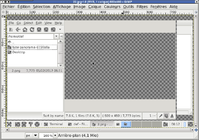/tmp/cczHBooL.s: Assembler messages:
/tmp/cczHBooL.s:178: Error: selected processor does not support ARM mode `vld1.u8 {d0},[ip]!'
/tmp/cczHBooL.s:181: Error: selected processor does not support ARM mode `vld1.u8 {d1},[r4]!'
/tmp/cczHBooL.s:182: Error: selected processor does not support ARM mode `vld1.u8 {q1},[r2]!'
/tmp/cczHBooL.s:183: Error: selected processor does not support ARM mode `vzip.u8 d0,d1'
/tmp/cczHBooL.s:184: Error: selected processor does not support ARM mode `vld1.u8 {q2},[r1]!'
/tmp/cczHBooL.s:185: Error: selected processor does not support ARM mode `vst2.u8 {q0,q1},[r3]!'
/tmp/cczHBooL.s:186: Error: selected processor does not support ARM mode `vmov.u8 q1,q2'
/tmp/cczHBooL.s:187: Error: selected processor does not support ARM mode `vst2.u8 {q0,q1},[r0]!'
/tmp/cczHBooL.s:234: Error: selected processor does not support ARM mode `vld1.u8 {d0},[ip]!'
/tmp/cczHBooL.s:237: Error: selected processor does not support ARM mode `vld1.u8 {d1},[r4]!'
/tmp/cczHBooL.s:238: Error: selected processor does not support ARM mode `vld1.u8 {q1},[r2]!'
/tmp/cczHBooL.s:239: Error: selected processor does not support ARM mode `vzip.u8 d0,d1'
/tmp/cczHBooL.s:240: Error: selected processor does not support ARM mode `vld1.u8 {q2},[r1]!'
/tmp/cczHBooL.s:241: Error: selected processor does not support ARM mode `vst2.u8 {q0,q1},[r3]!'
/tmp/cczHBooL.s:242: Error: selected processor does not support ARM mode `vmov.u8 q1,q2'
/tmp/cczHBooL.s:243: Error: selected processor does not support ARM mode `vst2.u8 {q0,q1},[r0]!'
make[2]: *** [image-format-conversions.lo] Error 1
make[2]: Leaving directory `/root/xf86-video-omapfb/src'
make[1]: *** [all-recursive] Error 1
make[1]: Leaving directory `/root/xf86-video-omapfb'
make: *** [all] Error 2


